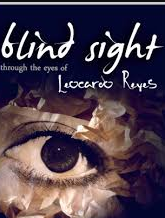Is blindsight the same mechanically as normal vision (aside from being able to see details, like color, writing, etc.)?
Blindsight
With blindsight, a monster can perceive its surroundings without seeing them, within a specific radius.
As with creatures with echolocation or heightened senses. Such as bats and true dragons, creatures without eyes are likely to possess this sense. As are creatures without eyes, such as grimlocks and gray oozes.
A monster with blindsight has a parenthetical note stating that the radius of its blindsight determines its maximum perception range.
According to my understanding, Blindsight grants the same mechanical benefits as normal vision. Since it is capable of perceiving its surroundings without relying on sight. Blind creatures can perceive targets using a variety of senses, as opposed to blind creatures without sight. An individual with Blindsight might be able to hear movement, breath, heartbeat; smell creatures or items; feel vibrations or heat, or use echolocation to see. A creature with Blindsight should be able to recognize where a creature or item is, and what it is doing, with all of these heightened senses. However, RAW appears to indicate that creatures with Blindsight, such as a Bat, that suffer from the Blinded condition, suffer disadvantage on attack rolls and are more prone to attacks:
Blinded
Blind creatures are unable to see, so any ability check that requires vision fails automatically.
The creature’s attack rolls are disadvantageous, and attack rolls against it have advantage.
In spite of being in heavily obscured areas and therefore subject to the Blinded condition, Bats don’t seem to suffer from disadvantage on attack rolls or be more prone to other attacks than creatures with sight:
It is impossible to see in a highly obscured area, such as a dense forest or opaque fog. When trying to see something in that area, a creature is effectively blinded.
Apart from the small details mentioned earlier, blindsight is believed to provide the same mechanical benefits as normal sight. Even if we were to argue that the creature was not specifically affected by the Blinded effect since it is not explicitly mentioned in RAW, it is very clearly stated in the Unseen Attackers and Targets section that “when you attack a target you cannot see, you have disadvantage on the attack roll”:
Attackers and targets unknown
It is common for combatants to try to avoid their foes’ notice by hiding. Casting a spell of invisibility, or hiding in the dark.
You have disadvantage on attack rolls when you attack a target you cannot see. It doesn’t matter whether you’re guessing a creature’s location or you’re aiming at a creature you can hear but not see. DMs typically tell you whether or not you guessed the target’s location correctly. If you miss if the target is not in the location you targeted.
It has advantage on attack rolls against you when it cannot see you. If you are hidden-both unseen and unseen. When you make an attack, you give away your location whether you hit or miss.
There are three RAW sections that mention that creatures that cannot see (whether blinded or not) have an advantage on attack rolls and are more vulnerable to enemy attacks. Blindsight creatures do not appear to benefit from this. Therefore, creatures with Blindsight do mechanically have normal vision (not including sensitive details such as color, writing, reading a creature’s expression, etc.).
As a result, it should be possible for a creature with Blindsight to cast spells relying on sight even if they are Blinded.
Read also:
